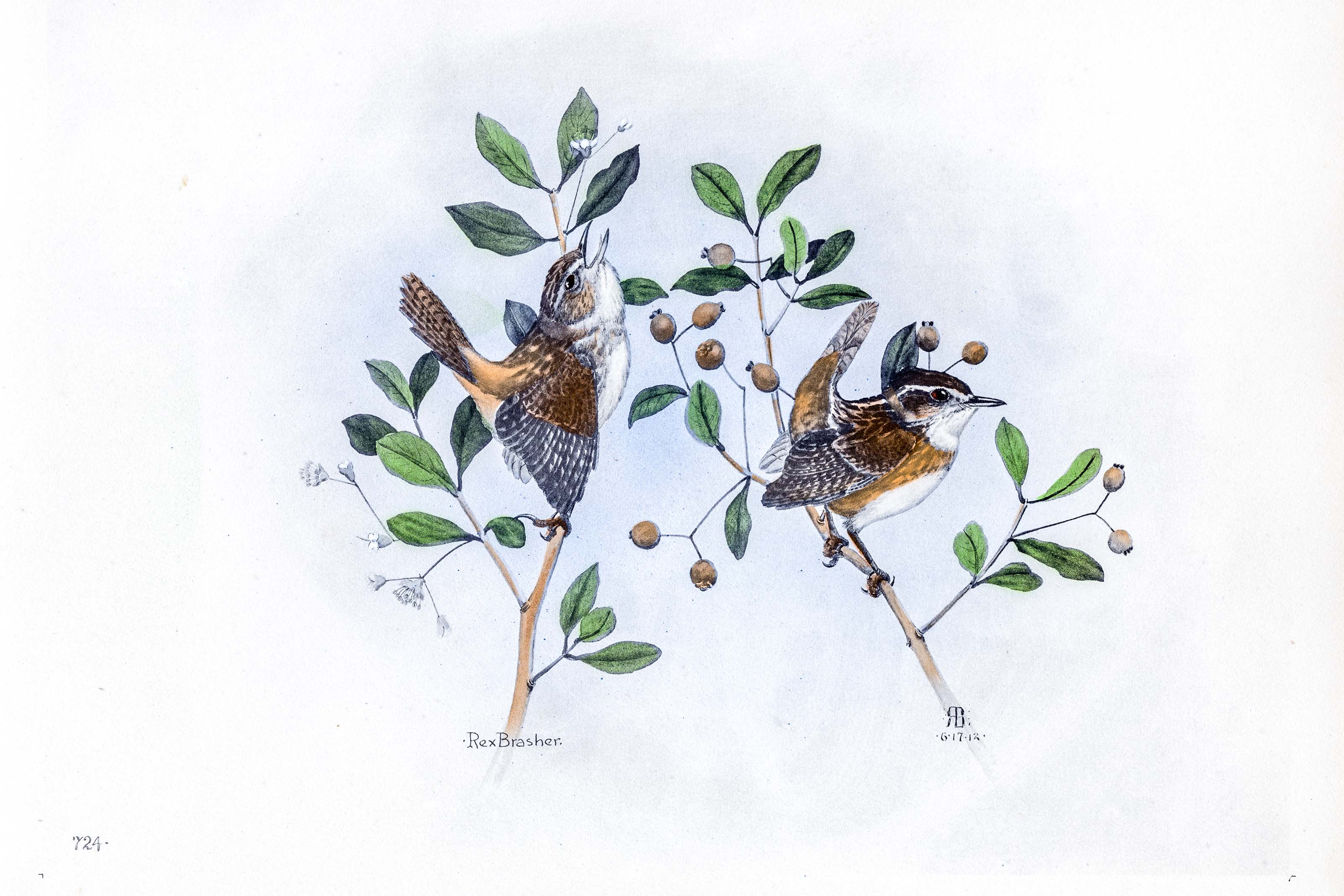
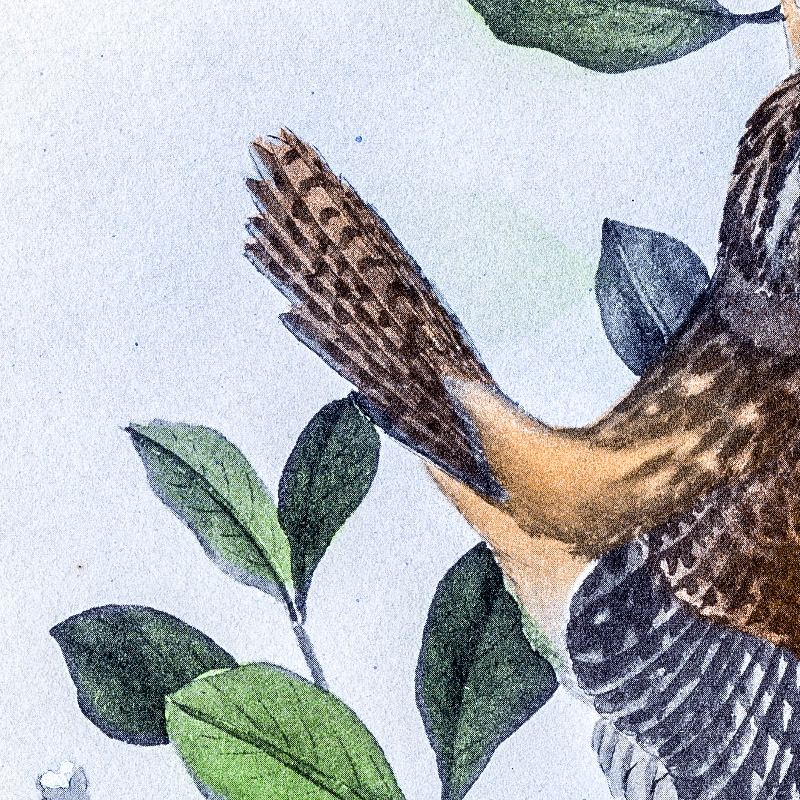
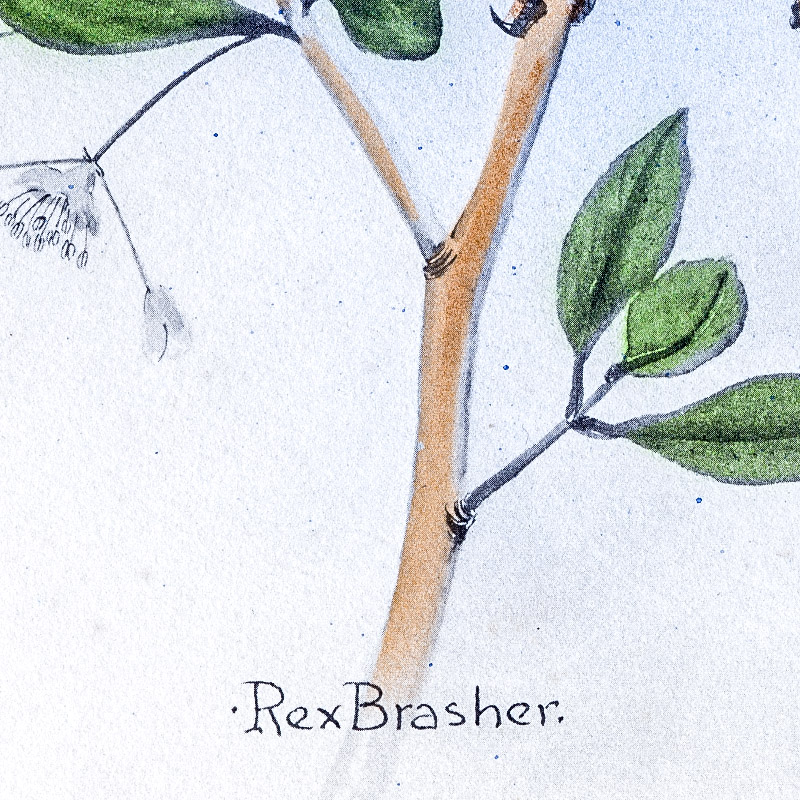
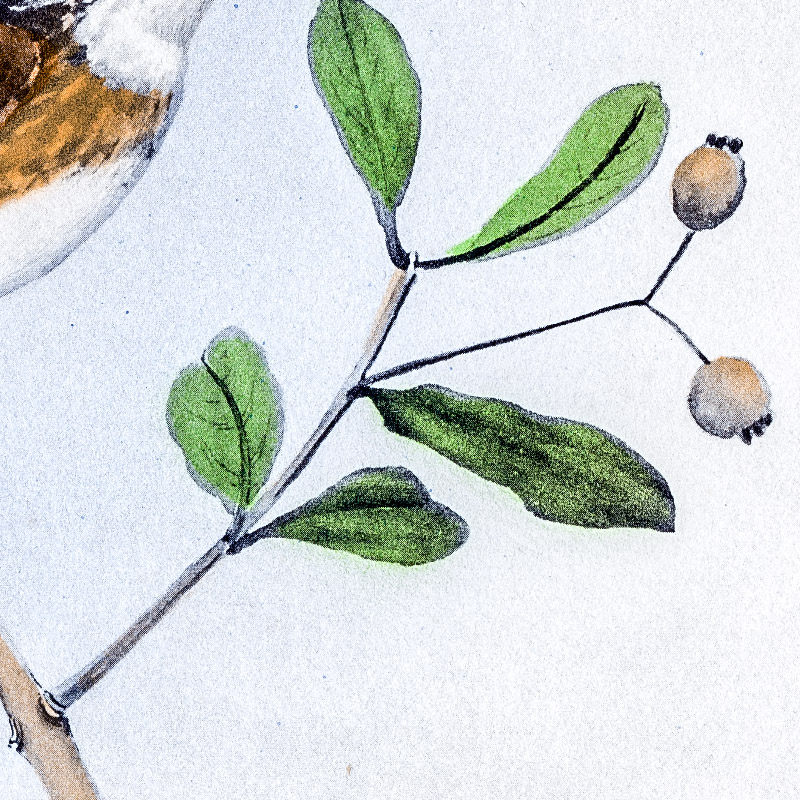
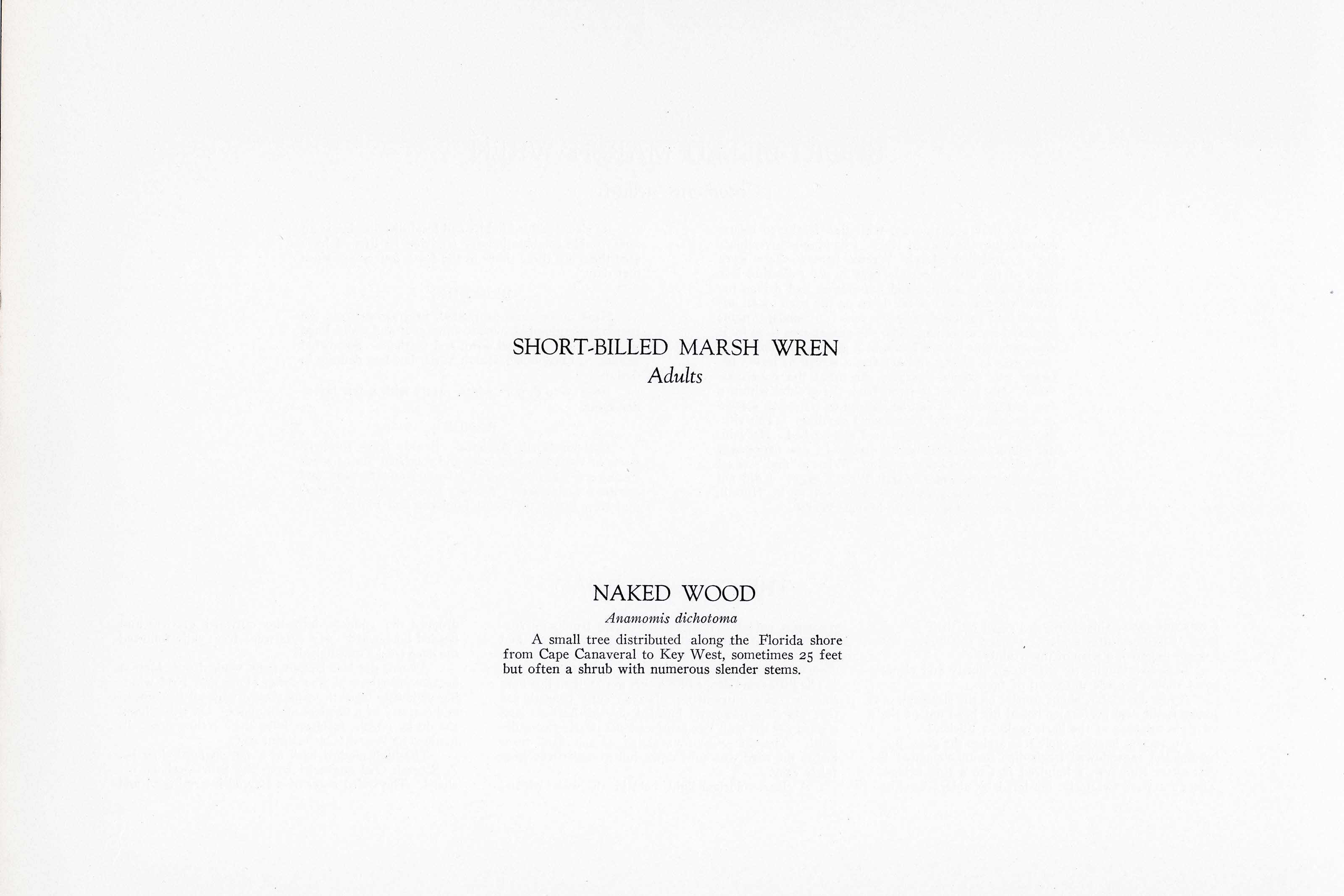
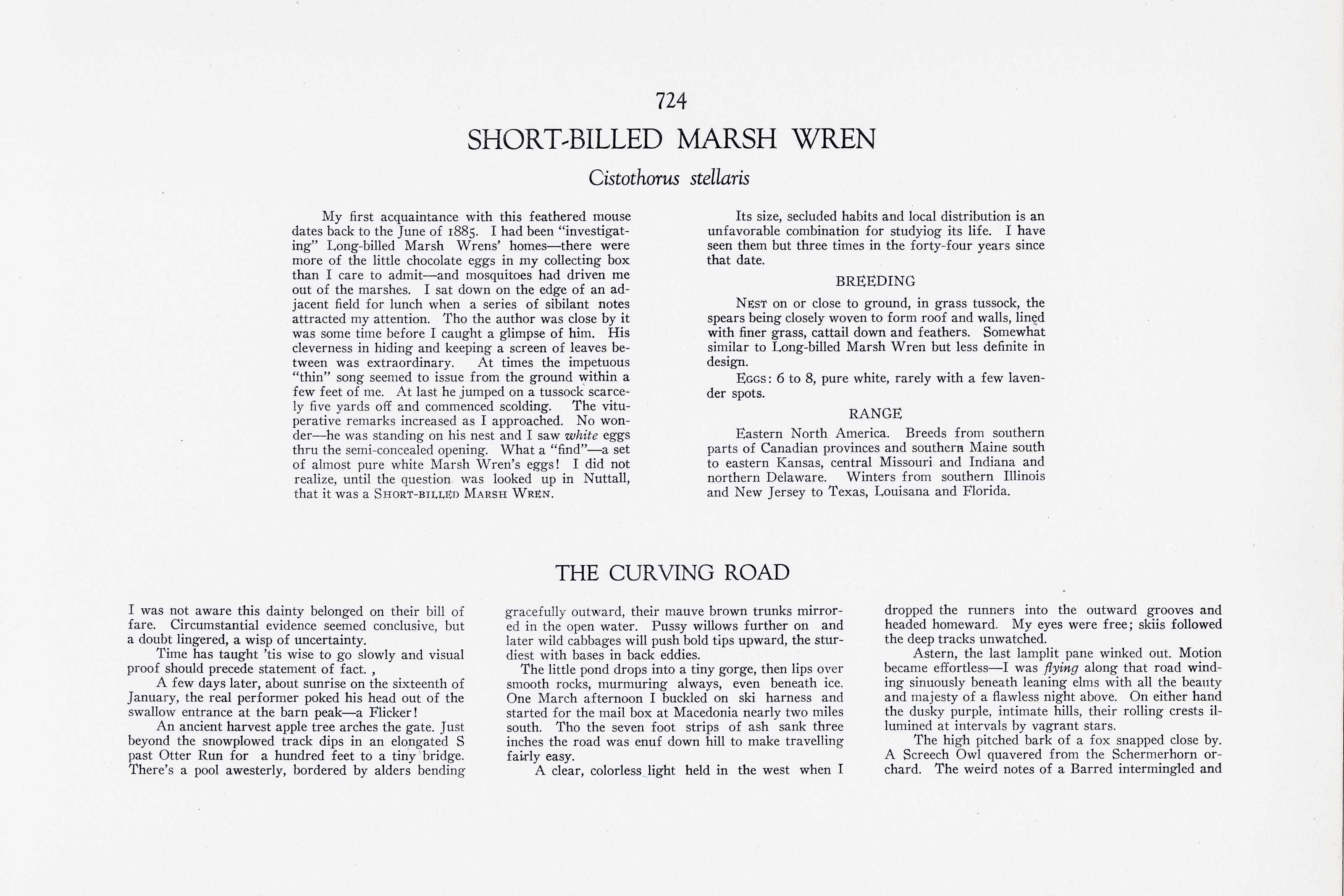

1912
1929
12
724
A team of dedicated board members, volunteers, and student interns has published every page in Volume 9. This volume includes 360 images of paintings and lyrical descriptions of birds, now available online for everyone to enjoy anywhere in the world. This is a monumental task. Each volume requires approximately 400 hours to photograph, edit, transcribe, catalog, and publish online. We need your support to complete this work.
If you're tech-savvy, have a good eye, are meticulous with details, and love structured data, please consider volunteering by emailing us at hello@rexbrasher.org.
We encourage all bird lovers and supporters to consider a monetary donation to support our mission to make Rex's work available for everyone. You can provide a one-time or recurring donation online.
My first acquaintance with this feathered mouse dates back to the June of 1885. I had been "investigating" Long-billed Marsh Wrens' homes — there were more of the little chocolate eggs in my collecting box than I care to admit — and mosquitoes had driven me out of the marshes. I sat down on the edge of an adiacent field for lunch when a series of sibilant notes attracted my attention. Tho the author was close by it was some time before I caught a glimpse of him. His cleverness in hiding and keeping a screen of leaves between was extraordinary. At times the impetuous "thin" song seemed to issue from the ground within a few feet of me. At last he jumped on a tussock scarcely five yards off and commenced scolding. The vituperative remarks increased as I approached. No wonder — he was standing on his nest and I saw white eggs thru the semi-concealed opening. What a "find" — a set of almost pure white Marsh Wren's eggs! I did not realize, until the question was looked up in Nuttall, that it was a SHORT-BILLED MARSH WREN.
Its size, secluded habits and local distribution is an unfavorable combination for studyiog its life. I have seen them but three times in the forty-four years since that date.
NEST on or close to ground, in grass tussock, the spears being closely woven to form roof and walls, lined with finer grass, cattail down and feathers. Somewhat similar to Long-billed Marsh Wren but less definite in design.
EGGS: 6 to 8, pure white, rarely with a few lavender spots.
Eastern North America. Breeds from southern parts of Canadian provinces and southern Maine south to eastern Kansas, central Missouri and Indiana and northern Delaware. Winters from southern Illinois and New Jersey to Texas, Louisana and Florida.
A small tree distributed along the Florida shore from Cape Canaveral to Key West, sometimes 25 feet but often a shrub with numerous slender stems.